Himalayan Mountaineering Safety: Must-Know First Aid Skills
Imagine this: You’re halfway up a rocky trail in the Himalayas, the wind picking up, and you
hear a teammate shout out in pain. They’ve twisted an ankle badly, or worse, they’re showing
signs of altitude sickness. What do you do? Having first aid knowledge could be the difference
between a minor setback and a major crisis.
In this article, we are going to take you through some essential first aid skills that every
mountaineer should know – because while we all hope that nothing goes wrong on our climb,
being prepared for the unexpected is what makes us truly ready for the challenge.
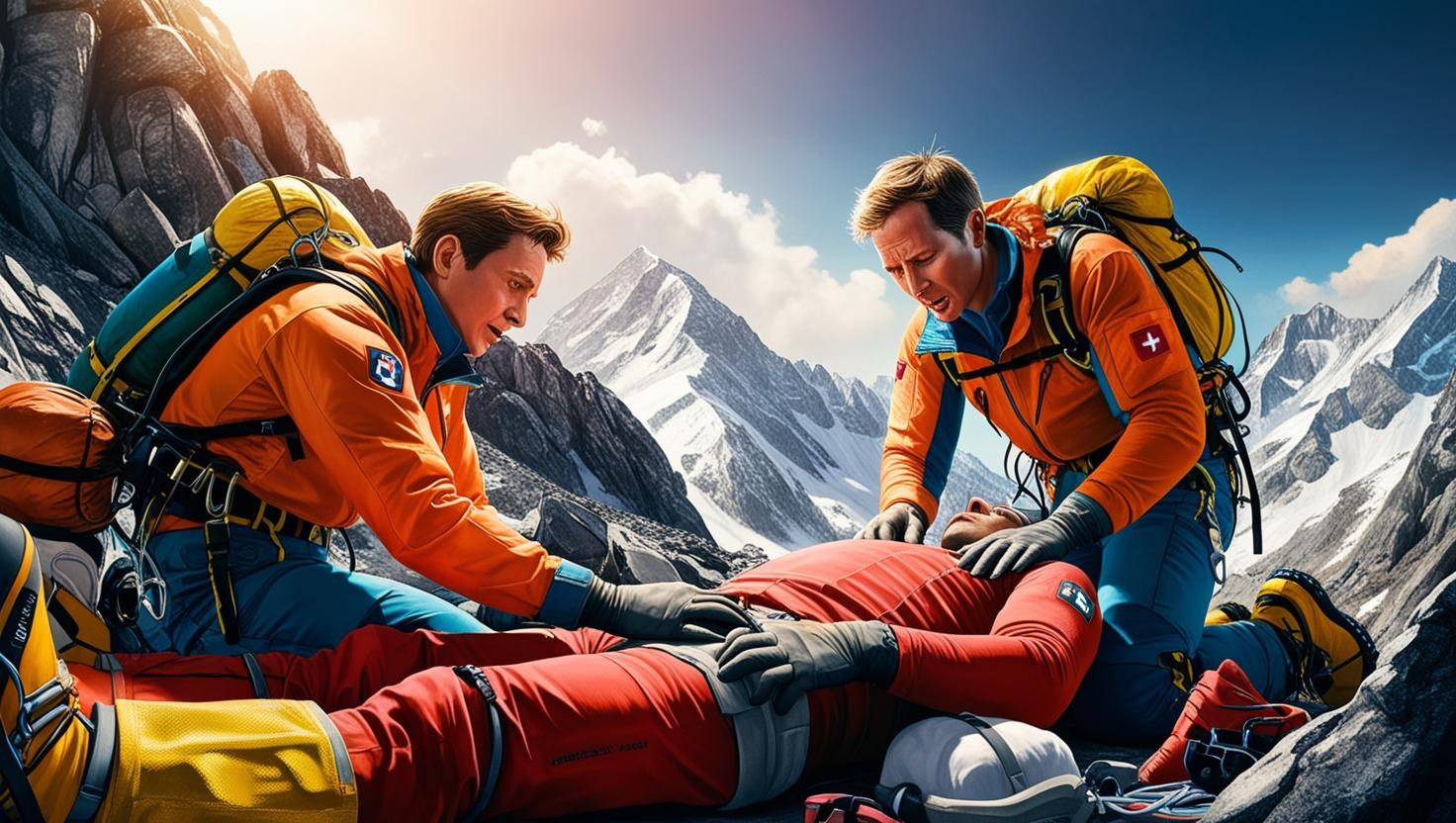
Table of contents
How to Recognize and Treat Hypothermia in High-Altitude Environments
Frostbite Treatment: What Every Mountaineer Should Know
How to Handle Altitude Sickness: Effective Acclimatization Techniques
First Aid for Sprains and Fractures in Remote Mountaineering Locations
Essential Basic Wound Care for Outdoor Adventures in Rugged Terrain
Learn CPR and Basic Life Support: Key Life-Saving Skills for Himalayan Mountaineering
Must-Have Items for Your First Aid Kit in High-Altitude Trekking
The Takeaway: Be Prepared for Anything on Your Himalayan Mountaineering Adventure
How to Recognize and Treat Hypothermia in High-Altitude Environments
Hypothermia is one of the most common dangers faced by mountaineers, especially in colder
regions. This condition occurs when the body’s temperature drops below 95°F (35°C), impairing
the body’s ability to function properly. Symptoms include shivering, confusion, slurred speech,
and drowsiness.
Treatment:
- Move to a warm place: Get out of the wind and cold, and try to find shelter.
- Warm the person gradually: Use blankets, dry clothes, and warm, non-alcoholic drinks.
- Monitor breathing and heart rate: If the person becomes unresponsive, perform CPR
Tip: Avoid rapid rewarming techniques, such as hot water or heating pads, as this can cause
shock. Hypothermia treatment is all about gentle, gradual rewarming to avoid complications.
Frostbite Treatment: What Every Mountaineer Should Know
When temperatures drop, frostbite becomes a real danger. It happens when skin and tissue
freeze. It often affects extremities like fingers, toes, and the nose. The affected area will look
pale or white, feel numb, and may feel stiff to the touch.
Treatment:
- Get indoors: Gently warm the affected area with body heat or warm (not hot) water.
- Do not rub the skin: Rubbing can cause further tissue damage.
- Cover the area with a sterile bandage: Once it’s thawed, protect it from further harm.
Tip: Never attempt to rewarm frostbitten areas if there’s a risk of refreezing.
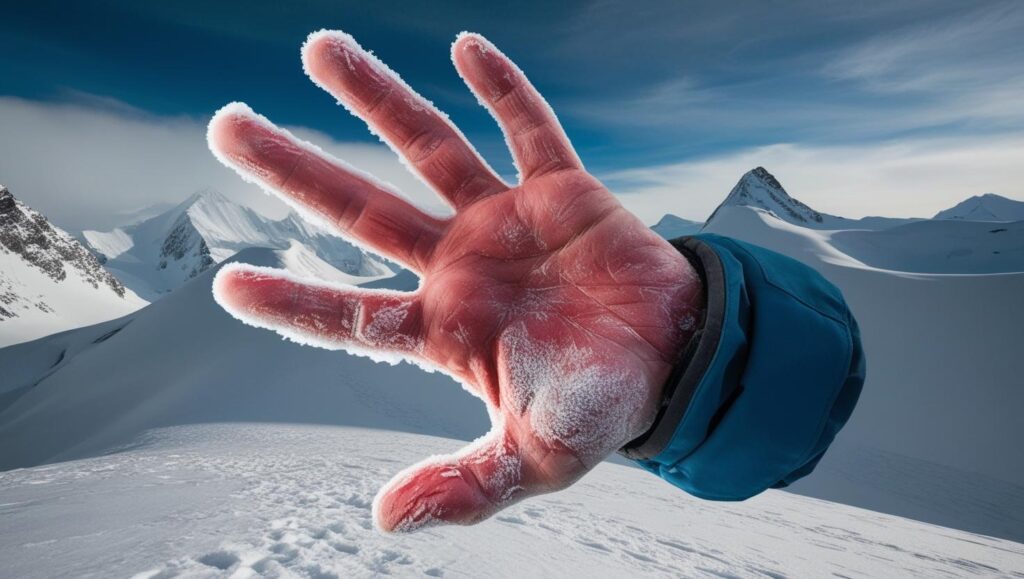
How to Handle Altitude Sickness: Effective Acclimatization Techniques
Altitude sickness, also known as acute mountain sickness (AMS), occurs when you ascend too
quickly to high altitudes, typically above 8,000 feet (2,400 meters). Symptoms include headache,
nausea, dizziness, and shortness of breath. If left untreated, it can escalate into more severe
conditions like High Altitude Pulmonary Edema (HAPE) or High Altitude Cerebral Edema
(HACE).
Treatment:
- Ascend slowly: Give your body time to adjust to the altitude. Altitude acclimatization is
- crucial for avoiding altitude sickness.
- Hydrate: Drink plenty of water to help your body acclimatize.
- Descend if necessary: If symptoms worsen, it’s crucial to descend to a lower altitude.
Tip: Carrying some altitude sickness medication, like Diamox tablets can help prevent
symptoms, but always consult with a healthcare professional first. An acclimatization example
could be spending a night in Kathmandu at lower altitudes before heading further into the
mountains, allowing your body to adjust.
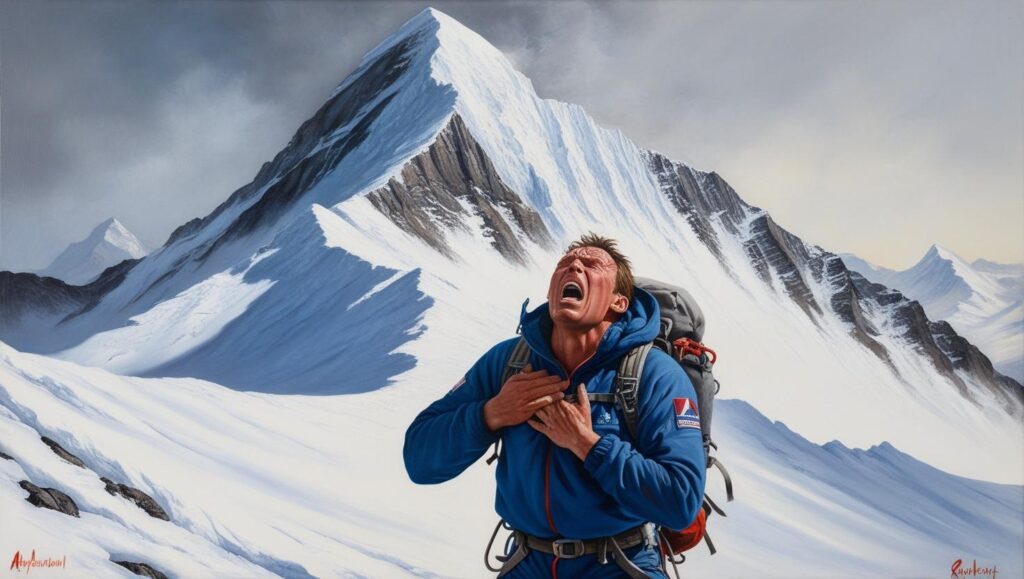
First Aid for Sprains and Fractures in Remote Mountaineering Locations
Accidents happen. A slip on the trail, a twisted ankle, or a fall onto rocky ground – it’s all part of
the adventure. But what do you do if one of your teammates gets injured?
Treatment for Sprains and Strains:
- Rest: Avoid putting weight on the injured area.
- Ice: Apply a cold compress or ice pack to reduce swelling.
- Compression: Wrap the injury in an elastic bandage to minimize swelling.
- Elevation: Keep the injured area elevated above the heart.
Treatment for Fractures:
- Stabilize the bone: Use a splint or any available material to immobilize the limb.
- Control bleeding: Apply pressure to any open wounds and dress them with a sterile
- bandage.
- Seek immediate help: Fractures in remote areas require rapid evacuation and
- professional medical care.
Essential Basic Wound Care for Outdoor Adventures in Rugged Terrain
In the rugged terrain of the mountains, scrapes, cuts, and bruises are common. But what if you
don’t take care of those minor injuries? Infections can set in quickly, especially in remote areas.
Treatment:
- Clean the wound: Gently clean the wound with water and mild soap.
- Stop the bleeding: Apply pressure with a clean cloth or bandage.
- Cover the wound: Use a sterile dressing to protect the wound from dirt and bacteria.
- Monitor for signs of infection: Redness, swelling, and pus are signs of infection that
- need prompt medical attention
And remember, if the wound looks infected – red, swollen, or oozing – seek help as soon as
possible.
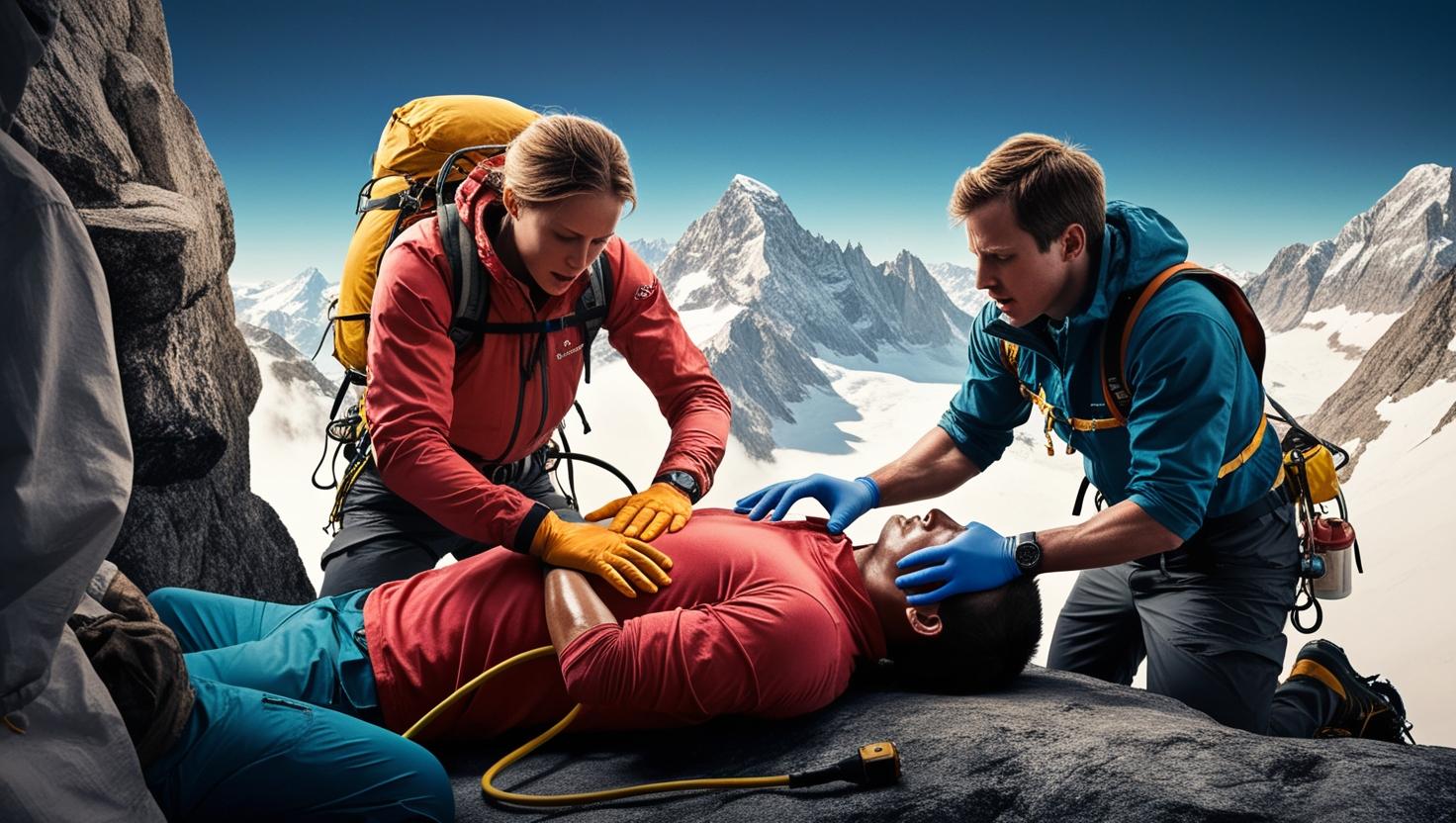
Learn CPR and Basic Life Support: Key Life-Saving Skills for Himalayan Mountaineering
If you’re ever in a situation where someone stops breathing or their heart stops beating, you’ll
need to act quickly. CPR (Cardiopulmonary Resuscitation) is a vital life-saving skill that could
keep someone alive long enough for help to arrive. In high-altitude trekking environments, CPR
can mean the difference between life and death.
Basic Steps for CPR:
- Call for help: Alert others and try to get the victim to a safer location.
- Check for breathing: If there’s no breathing or pulse, begin chest compressions.
- Provide chest compressions: Place your hands on the center of the chest and push down
hard and fast – about 2 inches deep at a rate of 100-120 compressions per minute. - Provide rescue breaths: After every 30 compressions, give 2 breaths if you’re trained in
CPR.
Tip: Training for CPR and Basic Life Support (BLS) is something every mountaineer should do.
The skills you learn can save lives.
Must-Have Items for Your First Aid Kit in High-Altitude Trekking
No first aid skill is effective without the proper tools. Every mountaineer should carry a well
stocked first aid kit, customized for their specific needs. Here’s what should be included:
- Adhesive bandages and sterile gauze
- Antiseptic wipes and ointments
- Pain relievers (ibuprofen, acetaminophen)
- Splints and bandages
- Thermal blankets for warmth
- Scissors and tweezers
- Antihistamines (for allergic reactions)
- A CPR mask or face shield
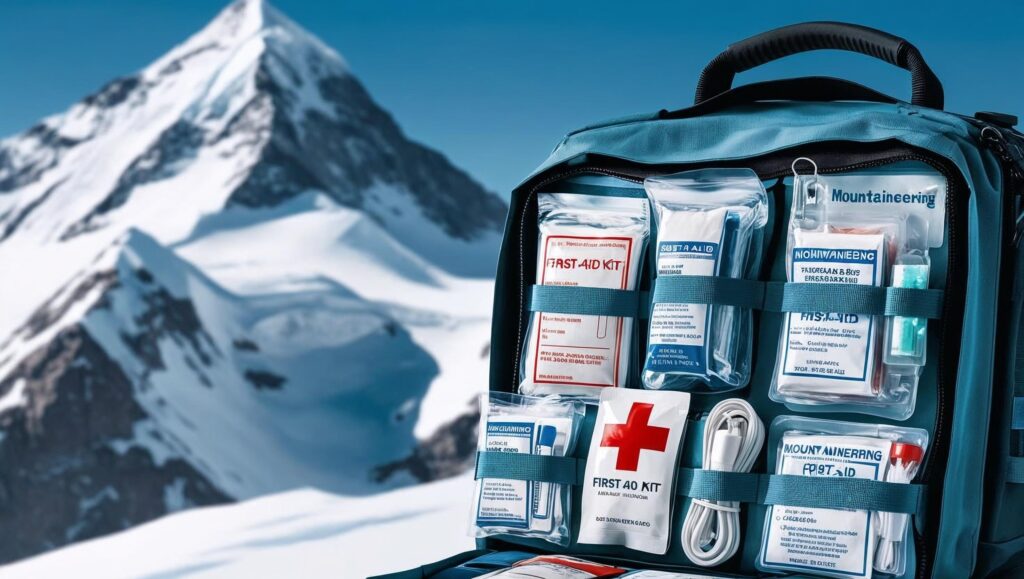
The Takeaway: Be Prepared for Anything on Your Himalayan Mountaineering Adventure
At the end of the day, mountaineering is about more than just conquering peaks – it’s about being
prepared for whatever the mountains throw at you. Knowing these first aid skills won’t just make
you a safer mountaineer; it’ll make you a more confident one. And if you’re ever in a situation
where someone needs your help, those skills could save a life. So, before you pack your gear for
that next big climb, take the time to learn these first aid skills. Your teammates, your safety, and
your adventure will thank you.
